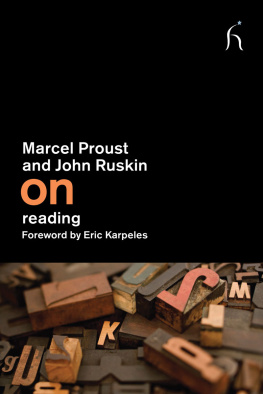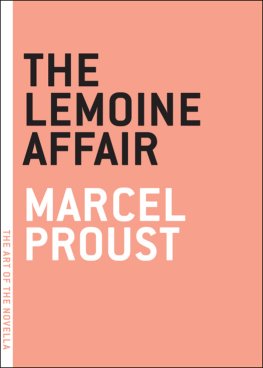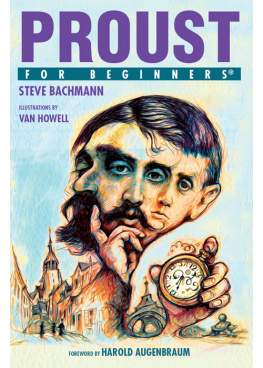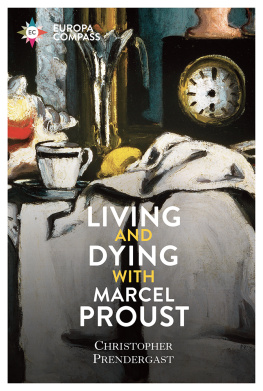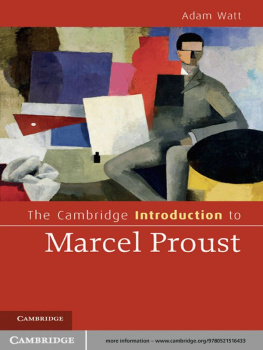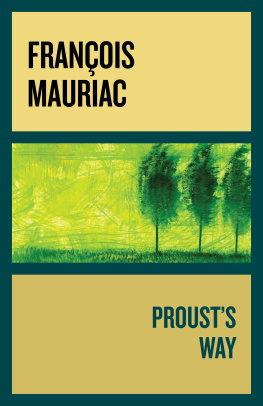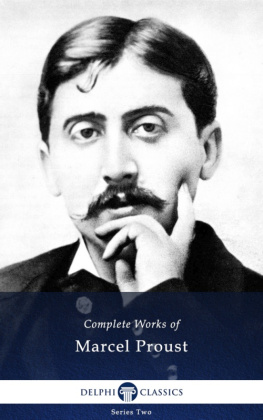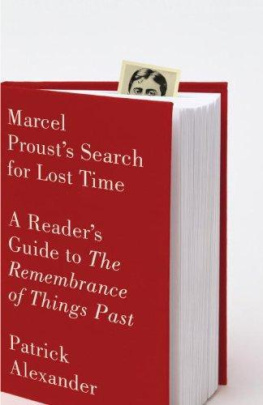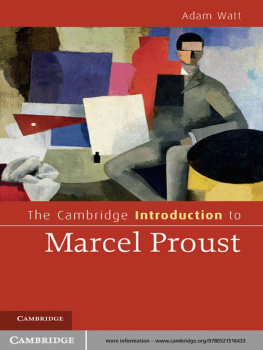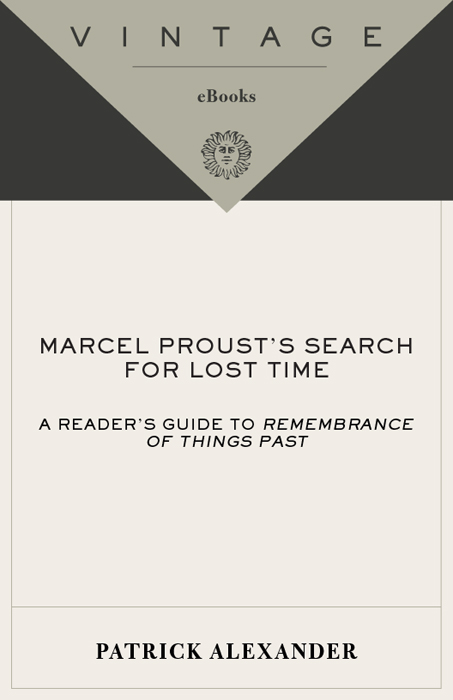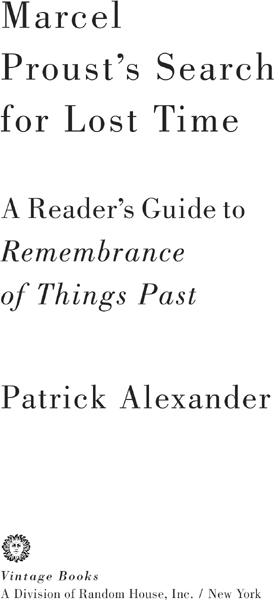Introduction
In Search of Lost Time, Marcel Prousts great novel, is like a beautiful garden filled with delights but hidden behind a forbidding wall. The wall is too high to scale and the gate is jealously guarded. Prospective readers who know of the books fame and status are frightened away by the sheer length of the noveland by its daunting academic reputation.
Except for those fortunate enough to spend several years confined to a hospital bed or a federal prison, or to be stranded on a desert island with their preselected library, few modern readers have the time to tackle a novel with more than three thousand pages, a million and a half words, and more than four hundred individual characters. The demands of contemporary living, and our culture of immediate gratification, mean that Prousts novel is increasingly read only by professional academics.
This is a great pity. Like the hidden garden, the novel, once entered, is an enchanting world filled with beauty and haunting images to delight all the senses. Prousts profound observations on life, literature, and art are brought to life by a rich panoply of characters who are as contemporary now as when they were first created. Above all, the book is extremely funny. Prousts humor, veering between the subtle and the outrageously bawdy, affects every page of the novel. In Search of Lost Time is a comic masterpiece.
The purpose of this book is threefold. It is an introduction for readers who have not yet read In Search of Lost Time and feel daunted by the length of the novel and the serious reputation of the author. It is a way to tempt them through the gate and into the garden. For those who are currently reading Proust, this book will provide a useful guide to the complexities of the plot and to help them keep track of the many different characters. It will serve as a map to the garden. For those who have already read Proust, I hope it will refresh their memories and provide a companion to help them recall and locate their favorite passages.
Part 1 describes the plot of Marcel Prousts In Search of Lost Time in three ways: a brief overview of the novel that describes the main story and the major themes; a summary of the whole novel in less than six hundred words (inspired by Monty Pythons famous All-England Summarize Proust Competition comedy sketch; and a detailed synopsis of the plot in each of the seven volumes.
Part 2 contains individual descriptions of the novels major characters. Names are listed alphabetically for quick reference, and this list is followed by thumbnail sketches of more than fifty of the most important individuals in the story.
Part 3 includes a brief biography of Marcel Proust as well as the historical background of the events referred to in the novel, such as the Dreyfus Affair and the Belle poque. There is also a map of Paris that shows not only where many of the characters in the novel lived but also the various places where Proust himself lived.
Proust and In Search of Lost Time
Marcel Proust was a French author, born in 1871, who spent most of his life in Paris and died in 1922. His most famous work, la recherche du temps perdu (In Search of Lost Time), was published in seven volumes between 1913 and 1927. The final three volumes were published posthumously.
Like James Joyces Ulysses and T. S. Eliots The Waste Land, both of which were published in the year of Prousts death, In Search of Lost Time was immediately recognized as a major and revolutionary work of literature. Graham Greene described Proust as the greatest novelist of the twentieth century and Somerset Maugham called In Search of Lost Time the greatest fiction to date.
Proust was perhaps the first artist to incorporate the radical and world-shattering ideas of Charles Darwin, Sigmund Freud, and Albert Einstein so effortlessly into his own work. He was extremely well read and educated on a wide variety of subjectsscientific, medical, historical, literary, and artisticall of which he integrated seamlessly into his fiction. This present book is focused only on the story and the characters in Prousts novel and, regretfully, must ignore the many rich themes of art, philosophy, and literature that he weaves throughout its pages. His literary references range from Xenophon to (then) contemporary novelists such as Zola; his musical references cover Western music from Palestrina to Puccini; and he refers to more than one hundred individual painters from Botticelli to the avant-garde Lon Bakst. All of these references are used to express and illustrate startlingly original insights into every aspect of the human condition, from love and sex to religion and deathand all with a freshness and a comic sense of the absurd.
One consistent theme that readers have observed over the past hundred years is how Prousts novel seeps into the readers life and the narrators memories become part of the readers own consciousness. Andr Gide wrote, Through the strange and powerful subtlety of your style I seem to be reading my own memories and my own most personal sensations. A more contemporary writer, Susan Minot, recalled reading Proust as a college student many years earlier: Looking back to the fall when I read In Search of Lost Time, I find my memory seems to be peppered with as many images from the book as from life. In fact, the images from life are more of a blur, and those from the book remain crystal clear (The Proust Project, 2004). Proust very consciously wrote his book not for the literary elite but for the general public. He described his novel as the sort of book a man might pick up at a railway station when setting off on a journey. Unfortunately, in recent years the book has developed a reputation for being difficult and is seldom seen in airport bookstallsnot to mention railway stations. This is partly because of its extreme length, which is indeed a challenge for the time-pressed modern reader. But it is also perceived as being irrelevant to the twenty-first century. The purpose of this present work is to show that, on the contrary, Prousts novel remains not only fresh and relevant to contemporary life but is extremely funny and shockingly entertaining.
The Illustrations



